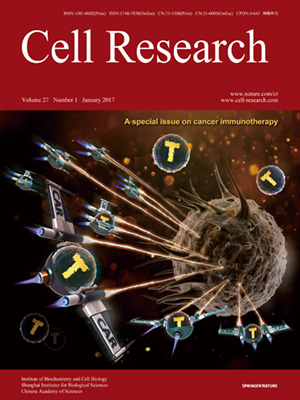
Volume 27, No 1, Jan 2017
ISSN: 1001-0602
EISSN: 1748-7838 2018
impact factor 17.848*
(Clarivate Analytics, 2019)
Volume 27 Issue 1, January 2017: 158-160
LETTERS TO THE EDITOR
Transfer of convalescent serum to pregnant mice prevents Zika virus infection and microcephaly in offspring
Shuo Wang1,2,*, Shuai Hong1,2,*, Yong-Qiang Deng3,*, Qing Ye3, Ling-Zhai Zhao4, Fu-Chun Zhang4, Cheng-Feng Qin3 and Zhiheng Xu1,5
1State Key Laboratory of Molecular Developmental Biology, CAS Center for Excellence in Brain Science and Intelligence Technology, Institute of Genetics and Developmental Biology, Chinese Academy of Sciences, Beijing 100101, China
2University of Chinese Academy of Sciences, Beijing 100101, China
3Department of Virology, State Key Laboratory of Pathogen and Biosecurity, Beijing Institute of Microbiology and Epidemiology, Beijing 100071, China
4Guangzhou Eighth People's Hospital, Guangzhou Medical University, Guangzhou, China
5Parkinson's Disease Center, Beijing Institute for Brain Disorders, Beijing 100101, China
Correspondence: Zhiheng Xu, E-mail: zhxu@genetics.ac.cn; Cheng-Feng Qin, E-mail: qincf@bmi.ac.cn
Zika virus (ZIKV) is spreading rapidly around the world in over 60 countries. There is a mounting concern over the association of ZIKV infection and devastating cases of fetal and newborn microcephaly cases1. The connection between ZIKV infection and microcephaly was first proposed based on the presence of ZIKV in microcephalic fetal brain tissues1. The causal link between ZIKV infection and microcephaly was recently confirmed in animal models and human cerebral organoids2,3,4. The infection is likely to cause deregulation of genes related to neural progenitor cell (NPC) development, cell death and immune response, and subsequently microcephaly2,3,4.
10.1038/cr.2016.144
FULL TEXT | PDF
Browse 3008


